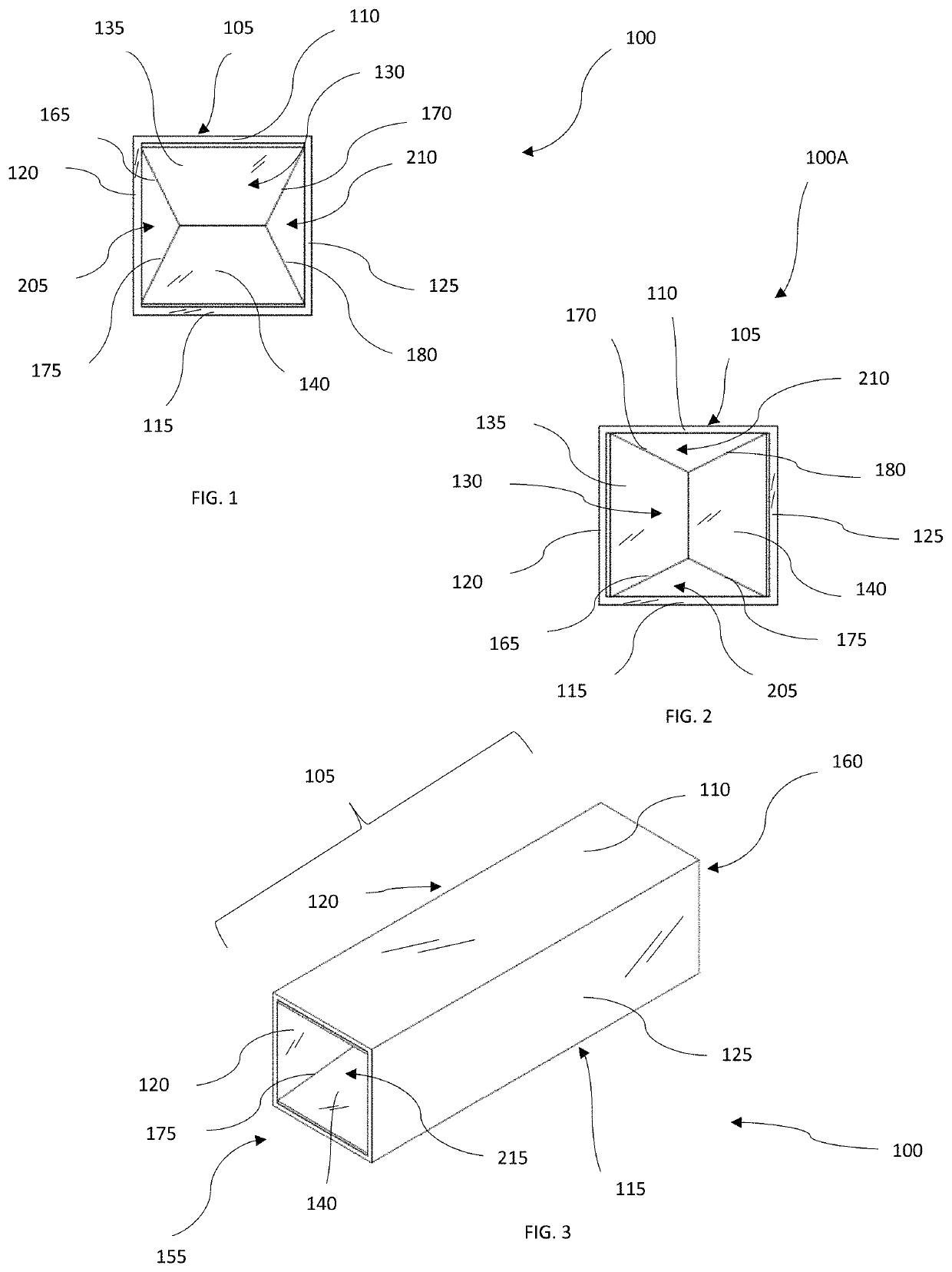Tube and chamber type heat exchange apparatus having an enhanced medium directing assembly
a heat exchange apparatus and chamber-type technology, applied in the field of heat exchangers, can solve the problems of design methodology, higher pressure drop, and higher pressure drop
- Summary
- Abstract
- Description
- Claims
- Application Information
AI Technical Summary
Benefits of technology
Problems solved by technology
Method used
Image
Examples
Embodiment Construction
[0060]Referring to the drawings and in particular FIG. 1 and FIG. 3, an embodiment of a heat exchanger 100 is shown. The heat exchanger 100 is generally for use when heat is desired to be transferred from a first heat exchange medium to a second heat exchange medium. Heat may travel into the heat exchanger 100 or out of the heat exchanger 100, dependent upon the nature of the application of the heat exchanger 100. The heat exchanger 100 is provided with a chamber assembly 105, with a chamber inlet 155 located on a first longitudinal end of the chamber assembly 105 and a chamber outlet 160 located on a second longitudinal end of the chamber assembly 105. The chamber assembly 105 is a longitudinally extended body with a hollow interior, permitting the flow of the first heat exchange medium inside the chamber assembly 105. The chamber inlet 155 is an orifice fluidly connected to the hollow interior of the chamber assembly 105, providing means to introduce the first heat exchange medium...
PUM
 Login to View More
Login to View More Abstract
Description
Claims
Application Information
 Login to View More
Login to View More - R&D
- Intellectual Property
- Life Sciences
- Materials
- Tech Scout
- Unparalleled Data Quality
- Higher Quality Content
- 60% Fewer Hallucinations
Browse by: Latest US Patents, China's latest patents, Technical Efficacy Thesaurus, Application Domain, Technology Topic, Popular Technical Reports.
© 2025 PatSnap. All rights reserved.Legal|Privacy policy|Modern Slavery Act Transparency Statement|Sitemap|About US| Contact US: help@patsnap.com



